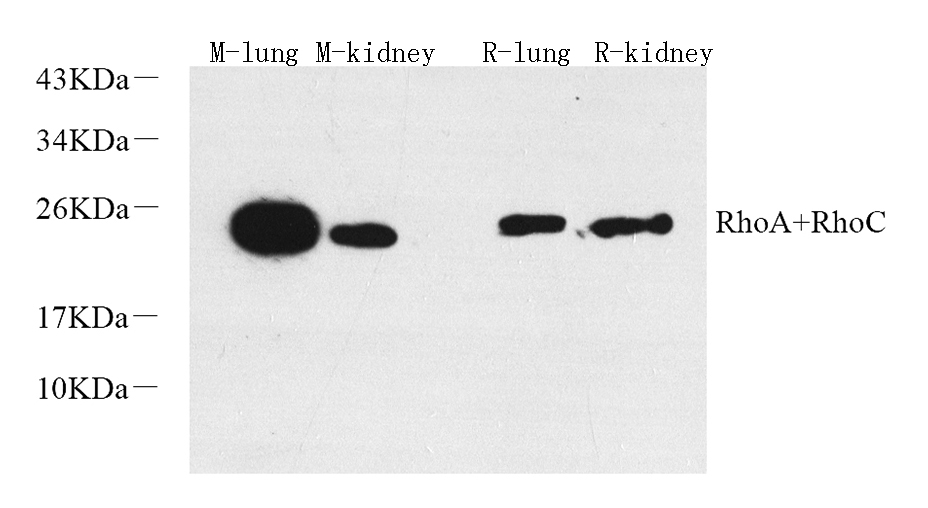RHOA Polyclonal Antibody
For reference only. Please follow the manual included in your kit for instructions.
Catalog Number
RD70563A
Product Name
RHOA Polyclonal Antibody
Catalog Number
RD70563A
Clonality
Polyclonal
Purification Method
Affinity purification
Isotype
IgG
Host
Rabbit
Background
Regulates a signal transduction pathway linking plasma membrane receptors to the assembly of focal adhesions and actin stress fibers. Involved in a microtubule-dependent signal that is required for the myosin contractile ring formation during cell cycle cytokinesis. Plays an essential role in cleavage furrow formation. Required for the apical junction formation of keratinocyte cell-cell adhesion. Serves as a target for the yopT cysteine peptidase from Yersinia pestis, vector of the plague, and Yersinia pseudotuberculosis, which causes gastrointestinal disorders. Stimulates PKN2 kinase activity. May be an activator of PLCE1. Activated by ARHGEF2, which promotes the exchange of GDP for GTP. Essential for the SPATA13-mediated regulation of cell migration and adhesion assembly and disassembly. The MEMO1-RHOA-DIAPH1 signaling pathway plays an important role in ERBB2-dependent stabilization of microtubules at the cell cortex. It controls the localization of APC and CLASP2 to the cell membrane, via the regulation of GSK3B activity. In turn, membrane-bound APC allows the localization of the MACF1 to the cell membrane, which is required for microtubule capture and stabilization.
Immunogen Information
Immunogen
KLH conjugated Synthetic peptide corresponding to Mouse RhoA .
Swissprot
Q9QUI0, P61589
Synonyms
Aplysia ras related homolog 12ARH12ARHAH 12H12Oncogene RHO H12Ras homolog family member ARas homolog gene family member ARho ARho cDNA clone 12RHO H12RHO12RHOARHOARHOH12Small GTP binding protein Rho ATransforming protein Rho ATransforming
Calculated MW
22 kDa
Observed MW
22 kDa
Applications
Reactivity
Mouse,Rat
Tested Applications
WB
Conjugation
Unconjugated
Dilution
WB 1:500-1:2000
Concentration
0.9 mg/mL
Storage Buffer
PBS with 0.02% sodium azide, 1% BSA and 50% glycerol, pH7.4
Storage Instructions
Store at -20°C. Avoid freeze / thaw cycles.
